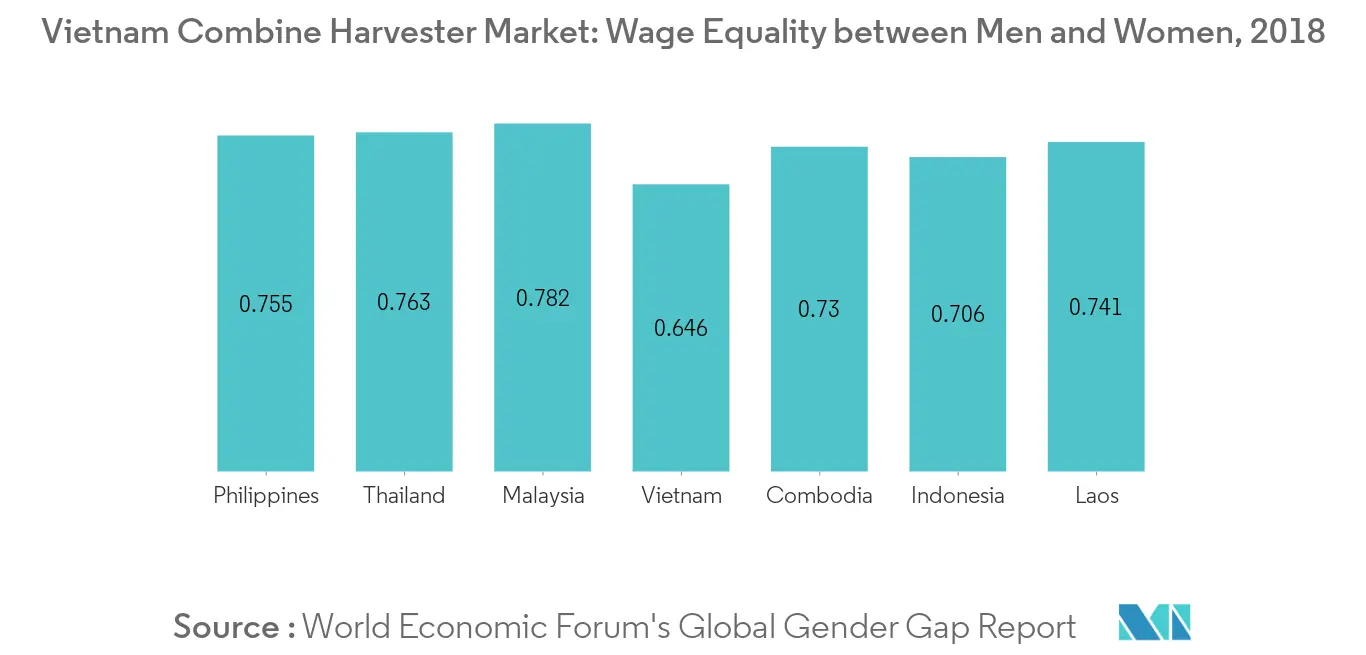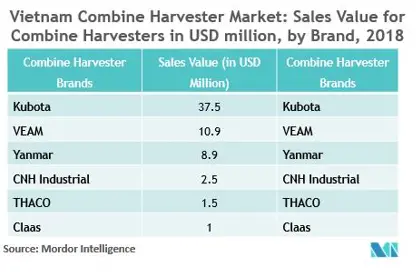Market Trends of Vietnam Combine Harvester Industry
This section covers the major market trends shaping the Vietnam Combine Harvester Market according to our research experts:
Shortage of Seasonal Agricultural Labor
Though agricultural wages are low and the lifestyle of laborers in the industrial background is poor, people prefer industrial jobs over agriculture, as the growth in agricultural production in Vietnam is on the decline. This situation is leading to a shortage of agricultural labor in Vietnam, during the farming season. There is excessive production of a few products with low quality, which is unable to cater to the demand for the new products required by the Vietnamese market. The competition for exporting the products has intensified, which has led to a decrease in the prices of crops. This situation has not helped the farmers to obtain a return on investments, who are unable to pay the labor costs. Shortage of seasonal agriculture labor is the major driver for the growth of the combine harvester market, as the work of laborers can be replaced with tractors because using tractors will also consume less time.

Mekong River Delta Dominates the Vietnam Combine Harvester Market in terms of Revenue
Mekong River Delta is the largest region for combine harvester market in Vietnam, having USD 12.2 million in 2018. Kubota, Yanmar, and VEAM are the largest companies that provide combine harvesters in the Vietnamese agricultural machinery market. Companies normally provide custom hiring facilities for combine harvesters, as they are high priced, which makes it difficult for small-scale farmers to buy these products. The local government provides combine harvesters on the lease so that farmers can harvest their crops at the appropriate time, as the region is prone to storms and cyclones. Despite large average land holdings in Mekong Delta, the agriculture is still largely based on small-scale production by a large number of small-holder farmers.


